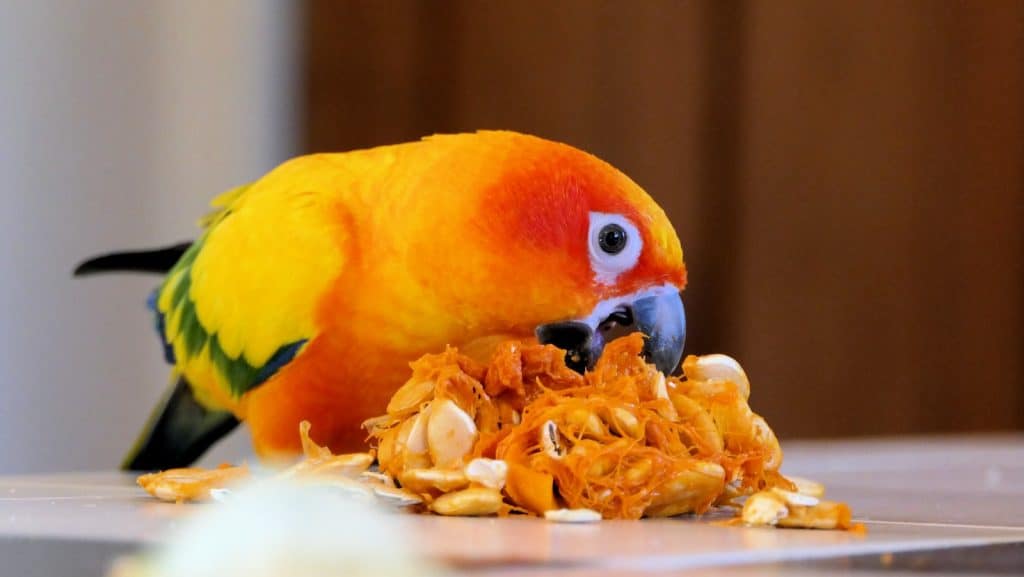
Conures are playful and energetic birds. This bird species, which is native to South America and one of the largest groups of parrots, is one of the most diverse. Because of their bright colors and playful personalities, they are a popular choice for pet birds.
These birds are a delight to watch, with over 100 species and subspecies. The most popular Conures are the Sun Conure and Green-cheeked Conures, Pineapple Conure, and Jenday Conures. Each one of these parrots, small and medium in size, has its own set of physical characteristics.
It is difficult to identify the gender of a Conure from its appearance, as it is with other parrot species. You must observe certain behaviors and perform a DNA test to distinguish males from females.
How do you distinguish the differences? Let’s take an in-depth look.
Sun Conures
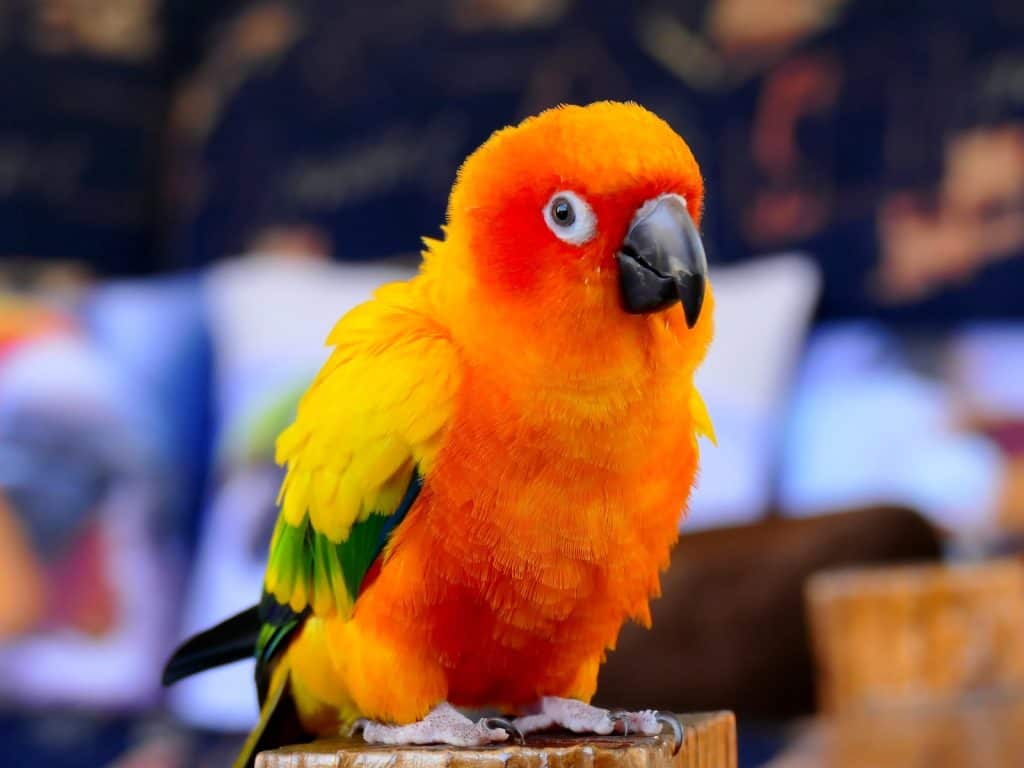
Sun Conures, scientifically called Aratinga solstitialis are colorful and interactive pet parrots. These spirited birds, originally from Brazil and Guyana are sometimes also known as sun parakeets.
They are loved by pet bird owners for their bright plumage, and ability to make sounds. Sun Conures are monomorphic birds, meaning that males and females are almost identical in appearance, but there are key differences.
How to tell the difference between a male and female Sun Conure
These are the signs to look for in order to determine if your Sun Conure is male or female.
* Coloration
Sun Conures are well-known for their unique colors, which include yellow, green, and blue. These colors can be used to identify the gender of your bird. The colors of males are more vivid and intense than those of females, particularly on their stomachs and faces.
Experienced breeders inspect the Conure’s redness. They could easily tell the difference if the birds were born at the same time.
The male birds have a lighter reddish coloration than the female when they are young. As they get older, their red coloration intensifies around their necks and face. The females don’t.
For this method to work, you need more than one bird. It is not reliable if only one bird is used.
* Behavior
You can identify your bird’s gender by looking at key behaviors. Female Sun Conures are social and cuddly, so they love being touched. Conures are also known for their loud singing, so females may be quieter than their male counterparts.
The males can be territorial and will defend their family members and cages. This method of identification can only be used if there are more than one Sun Conure.
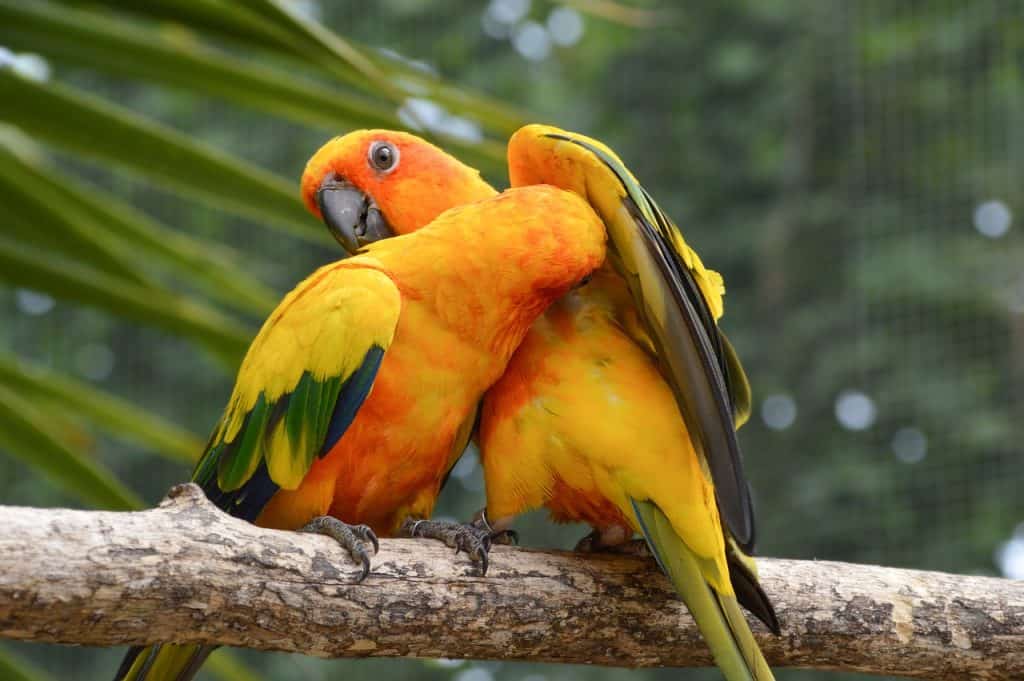
* Egg Laying
Your bird will lay an egg if it is fertile or infertile. This confirms that it is a female Sun Conure. These birds become fertile after 2 years.
During the breeding period, the females will look completely different to the males. Before they deposit eggs, their stomachs will appear bloated.
* The Tails
The tails can be used to distinguish the sexes. The tails of male Sun Conures are a little longer than those of their female counterparts by a few inches.
The tail length of males is between 5.15 to 5.74 inches, but the tails of females can be as little as 4.76 inches. In some cases, however, females may have shorter tails.
* Physical Appearance
Male Sun Conures are stronger and have thicker bodies than their female counterparts. Females, on the other hand, have smaller bodies and thinner bills. They are also more graceful.
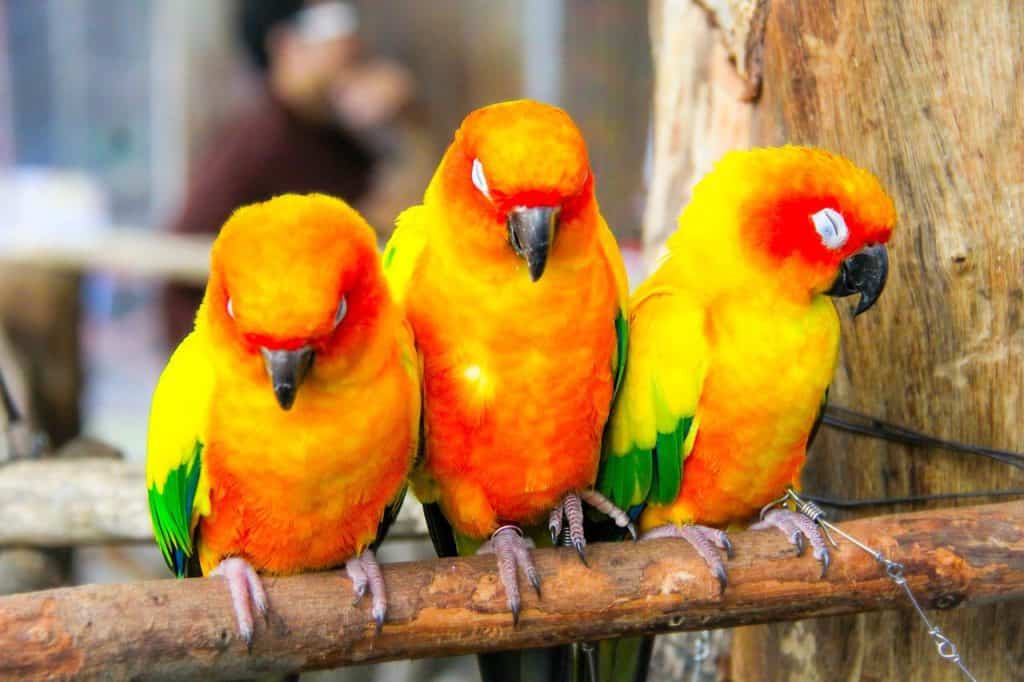
* The Sex Organs
Examining the sex organs of these birds is one of the best ways to determine their sex. An avian vet will perform this procedure by putting the bird under anesthesia. Then, he will make an incision on the left side of the bird’s body to inspect its organs.
If there is a testicle on the bird, it is male. If there are ovaries, the Sun Conure will be female. This is a risky option that could lead to complications or infection from the anesthesia.
* The Head
The head of your Sun Conure can tell you if it is male or female. The male heads are more angular on the top, while their female counterparts are more circular.
* DNA Sexing
The most commonly used method to determine whether a bird’s gender is male or female is DNA. Because it takes a DNA sample from the bird’s eggshell, blood, and feathers, this procedure is much less invasive than surgery. Professional groomers can help you obtain a sample from your bird.
Your Sun Conure’s sex is determined by the avian laboratory. This lab analyzes its sex chromosomes. This is the best way to determine your bird’s sexuality.
The green-eyed Conure is smaller than other conures. This bird species is strikingly beautiful, with its black beak, brown eyes, and red tail feathers. It also has a dark green body and pink feet.
It is difficult to tell if a male or a female is the same because of their similarities in physical characteristics. You can pay for DNA testing to make it easier or look for the following characteristics.
How to tell the difference between a male and female Green-Checked Conure
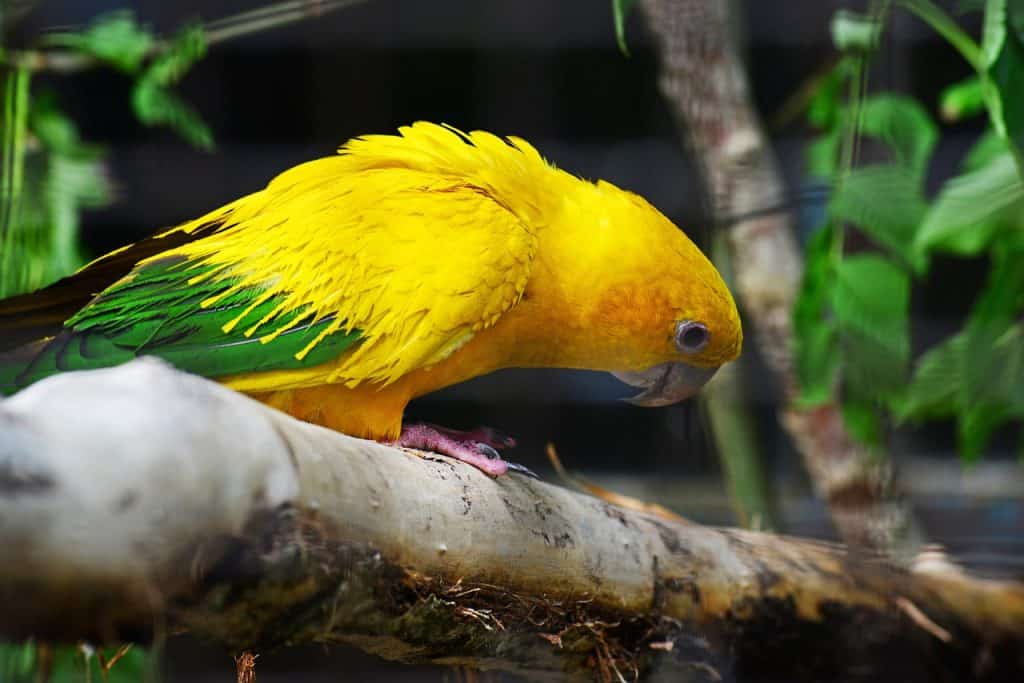
* The Feet
Female green cheek conures with pink feet tend to have gray toes, while males with the same color have pink feet. You will find that this can vary from bird to bird. To get the right gender identity, it is important to include other methods.
* The Head
You can determine gender by looking at the head of your green-checked Conure. Males have flat heads and rounder heads than females.
Each bird is unique, so some birds might be the exception. You should consider other methods of testing such as DNA.
* The Pelvic Bone
Females tend to have a wider and more round pelvic bone than their male counterparts. To determine the bird’s gender, a pelvic exam is possible.
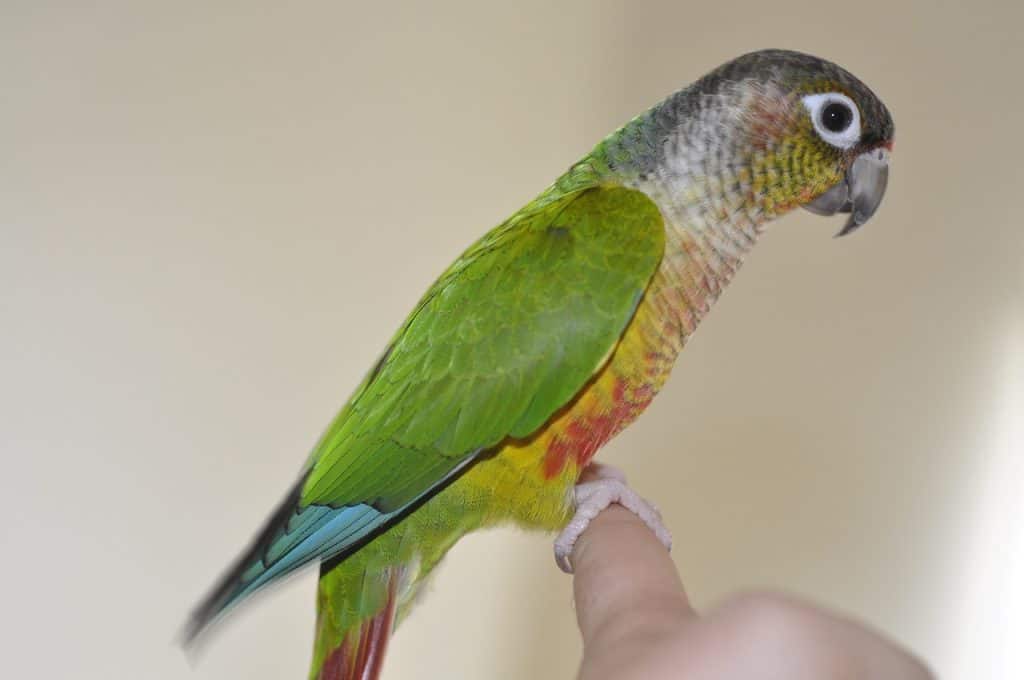
* DNA Sexing
Physical observation methods can’t always be 100% reliable. Therefore, DNA testing is essential. A blood sample or feather sample can be used for testing.
You must use fresh feathers. Follow the instructions on the test kit to pluck feathers at your home.
A testing kit can be purchased at an online shop, pet shop, or from your veterinarian. After you have plucked the feather, send it to the lab for a sex analysis. Your veterinarian must take a sample of blood to test for this procedure.
Jenday Conures
These birds are energetic and social breeds. These medium-sized conures, a native bird of Brazil, are well-known for their wit and sass. They are popular pets because they make great companions.
They have the same colors as the Sun Conure and are often confused. As they age, their green color gets brighter, but the Jendays get more yellow and orange as they age.
These birds are multi-colored and have a multi-colored plumage. They have a red-orange back and body with green wings and wings. The tail and wings are a shade of blue while the head is yellow with orange patches.
How to tell the difference between a male and female Jenday Conure
Jenday conures are monomorphic and it is difficult to determine gender without genetic testing or surgical sexing.
* The Eyes
The eyes are not distinct enough to be able to distinguish between the genders, but they do show a slight difference. Females have a lighter brown iris with a greyish-colored eye-ring. Males have a darker brown eye-ring and a more white iris.
* The Weight
Males are more likely to be heavier than females, depending on which bird they are. This will need to be confirmed by further testing.
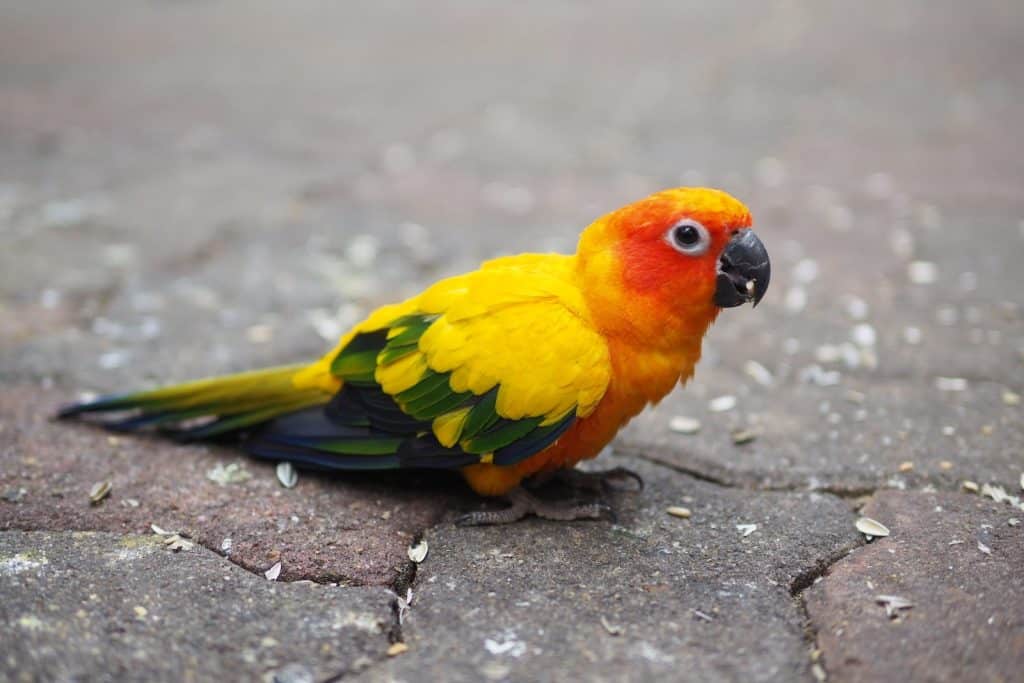
* Surgical Sexing
The vet can perform surgery to determine if your Jenday is male or female. A small incision can be made by the vet to determine if your bird has an egg or testicle.
* DNA Test
This method will determine the bird’s gender. It is foolproof and reliable. You can use blood and feathers to test for sex chromosomes.
Nanday Conure
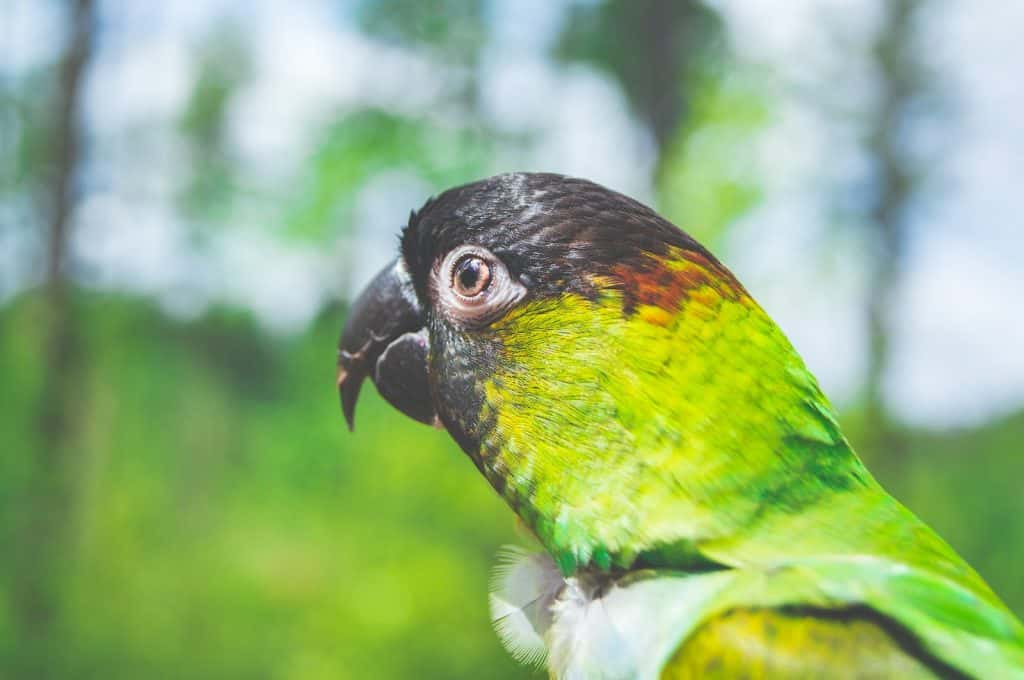
Nanday conures, also known as black-hooded parakeets are one of the most popular pet conure species in America. The Nanday is a native of central Paraguay, Brazil, and southeastern Bolivia.
They are scientifically called Nandayus Nenday and begin reproducing at the age of one year. They are distinguished by their distinctive blackhead. Their tails and wings are covered with dark blue feathers.
Bright orange feathers are also found around their vents and on their legs. They can live as long as 40 years if they are well cared for.
The appearance of male and female Nanday conures is almost identical. You can’t visually verify gender, so you will need to use DNA or surgical sexing for breeding birds.
How to tell the difference between a male and female Nanday Conure
* DNA Testing
Consider that you have a conure individual in your home. You will need to test DNA using feathers, blood or excrement. Because male and female Nandays are identical in appearance, sound, and behavior, this is the only reliable method. Only the male Nandays are visible sitting on the nest to lay eggs.
Pineapple Conure
This Conure breed is a variation on the green-checked Conure. These Conures were a mutation of the Yellow-sided and Cinnamon Conures.
Because of their unique colors and small size, they are a popular choice for pet birds. They are intelligent and friendly and require a lot from their owners.
It can be difficult to tell the difference between genders by just looking at the bird’s exterior. Owners can tell if their bird is male or female by using behavioral differences.
How to tell the difference between a male and female Pineapple Conure
* Temperament
The male pineapple conures are more aggressive and extraterritorial than their female counterparts. They are more adventurous than their female counterparts because of their personalities.
The female birds, on the other hand, are gentle and affectionate. You can determine their gender by watching how they behave.
* DNA Sexing
This is like other conures and it’s the best way to confirm your bird’s sex. You will receive confirmation because the results are reliable.
Blue-Crowned Conure
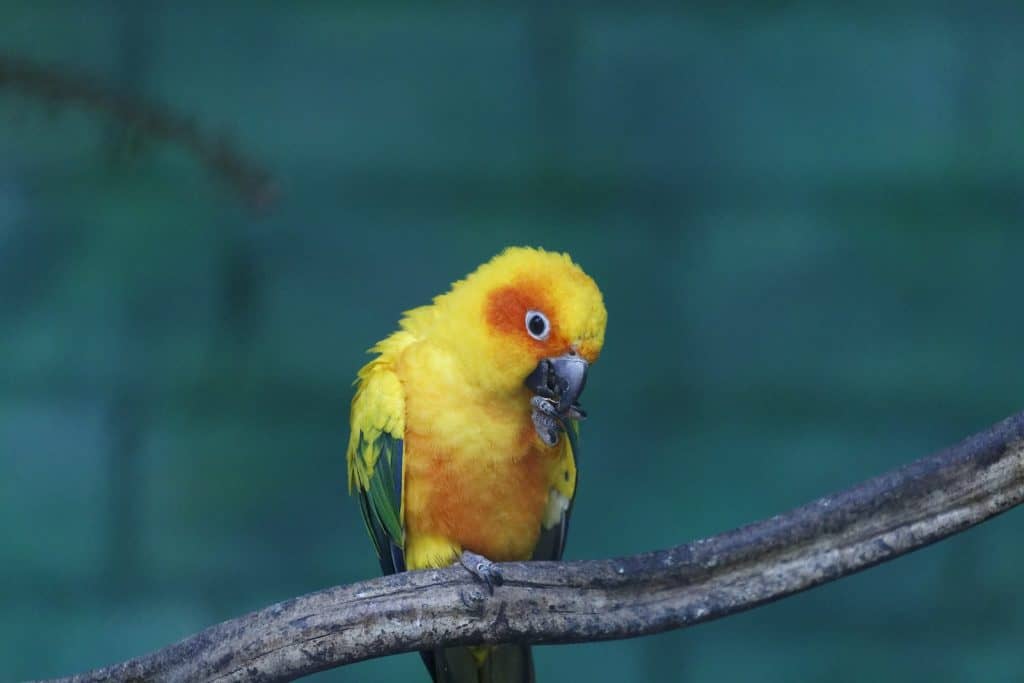
The Blue-crowned conures, also known as the Sharp-tailed conures, are colorful parrots that are native to South America’s regions of Argentina, Brazil, and Venezuela. This bird has a pointed tail and can grow to 15 to 17 inches in length.
This bird isn’t as colorful as other conures but it’s still vibrant. It has a predominantly green body with a blue crown at the top of its head that extends to the ears, cheeks, and neck.
These breeds are sexually diverse, so experienced people can use certain features to determine gender. Even though mistakes are possible, it is important to get a DNA test and/or surgical sexing if in doubt.
How to tell the difference between a male and female Blue-Crowned Conure
* The Eyes
The white eyepatches of male birds are more prominent than those of female birds when determining their gender. This is one-way breeders distinguish the two sexes.
* The Pelvic Bone
To distinguish the genders, experienced breeders use pelvic bones. To allow egg-laying, females have a larger pelvic bone than males.
* The Feathers
Males have longer feathers. If you are familiar with this breed, you can also use feather coloring to determine gender.
* Medical tests
For accurate results, your veterinarian can perform surgical sexing and DNA, endoscopy, or chromosomal analyses. These tests are your best bet if you want to be certain.
Dusky-Headed Conures
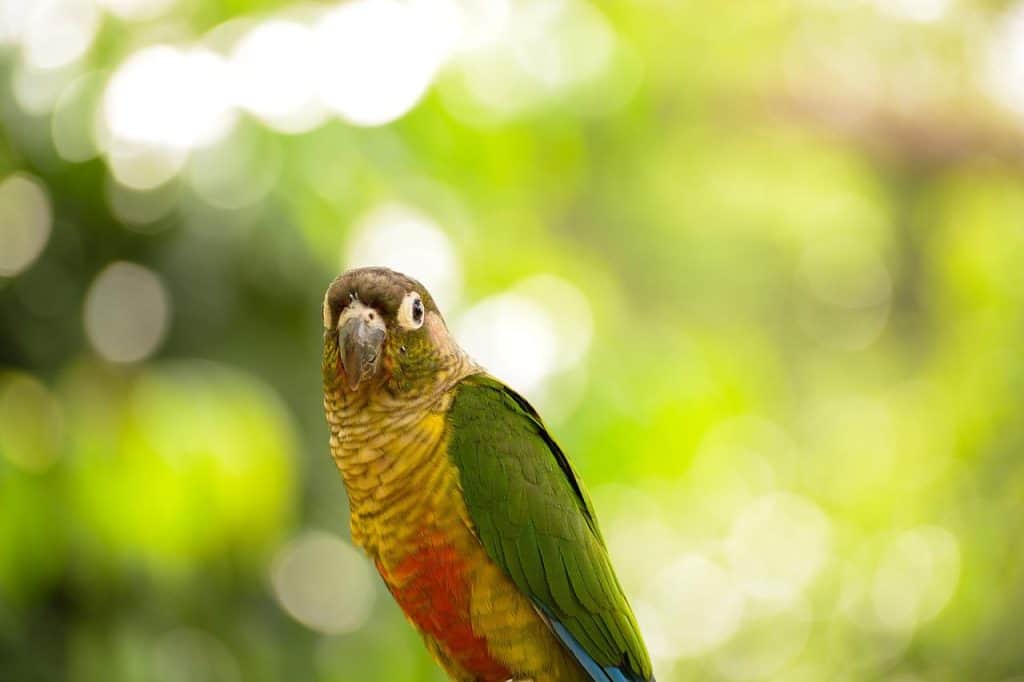
Dusky-headed Conures can also be called Weddell’s Conures or dusky-headed parakeets. Their scientific name is Aratinga Weddellii. They are originally from South America. Their popularity is slowly increasing, even though they are not common in the pet trade.
These birds are mostly green but have a grey-brown or greyish-brown head. Their abdomen and part may be yellow while their tail tip and edges are blue.
The Dusky-headed Conure is black with a white ring around its eyes and a black beak. They reach about 11 inches in length as adults.
How to tell the difference between a male and female Dusky-Headed Conure
These birds can only be bred if they are surgically or DNA sexed. Both sexes are almost identical and display similar behaviors. You can only verify this by consulting your veterinarian.
Summary
Conures are a popular choice for bird lovers because of their beautiful plumage. Each species is unique because they have a strikingly beautiful and distinctive color. Conures also have similar personalities and behaviors, so it is difficult for many owners to identify the sex of their birds.
Experienced breeders will be able to identify subtle differences in eyes, color, feathers, and pelvic bones that distinguish each gender. Some behaviors may also differ. These methods aren’t foolproof, so one would still need to have surgical or DNA sexing done to determine the gender.
These tests will help you determine the gender of your birds if you are planning to breed them.
Are male or female conures cuddlier?
Female conures, as a generality with several exceptions, are more friendly and cuddly.
Is it better to buy a female or male bird?
Female parrots are smaller and more friendly, but their feathers are duller and quieter. Males are significantly more colorful, but they are also bigger, which some owners in tiny houses cannot handle. Males, on the other hand, are more extroverted and fun, and they are more prone to converse and sing than females.
Is it true that male parrots prefer female owners?
Male parrots may be charming and caring to their female owners but violent to males. There are various reasons for this, one of which is because the bird is afraid of a man’s loud voice. Past traumas might also have an impact on this.
Is it better to have male or female birds?
Males are bigger and more colorful than females, but they are also noisier and more aggressive. Females are often smaller and darker in color, but they are more peaceful and affectionate.
Are male conures more aggressive?
Male pineapple conures are more territorial and violent than female pineapple conures. They are more daring than females due to their personalities. Female birds, on the other hand, are adorable and affectionate.
Do conures bite frequently?
Conures bite more than other parrots, although it is readily managed if taught appropriately and at a young age.
Why is my conure now hostile toward me?
While it is true that there are times when a parrot really dislikes someone, it is quite uncommon for a parrot to suddenly â€oehate†someone it has previously trusted. A parrot’s conduct toward its owner often changes because it is no longer comfortable with that person.
What’s the deal with my Green Cheek Conure biting me?
Birds may bite, and the consequences can be severe. A well-socialized bird, on the other hand, would never bite for no reason; if it does, it is because it feels threatened, upset, or wants your attention (a bad habit).
Female conures are they quiet?
In general, they’re quiet birds, but they enjoy human connection, so if you put in the effort, they can learn to communicate, albeit not every bird will. Green-Cheeked Conures, like parrotlets, are little, peaceful birds that can learn to speak a little.